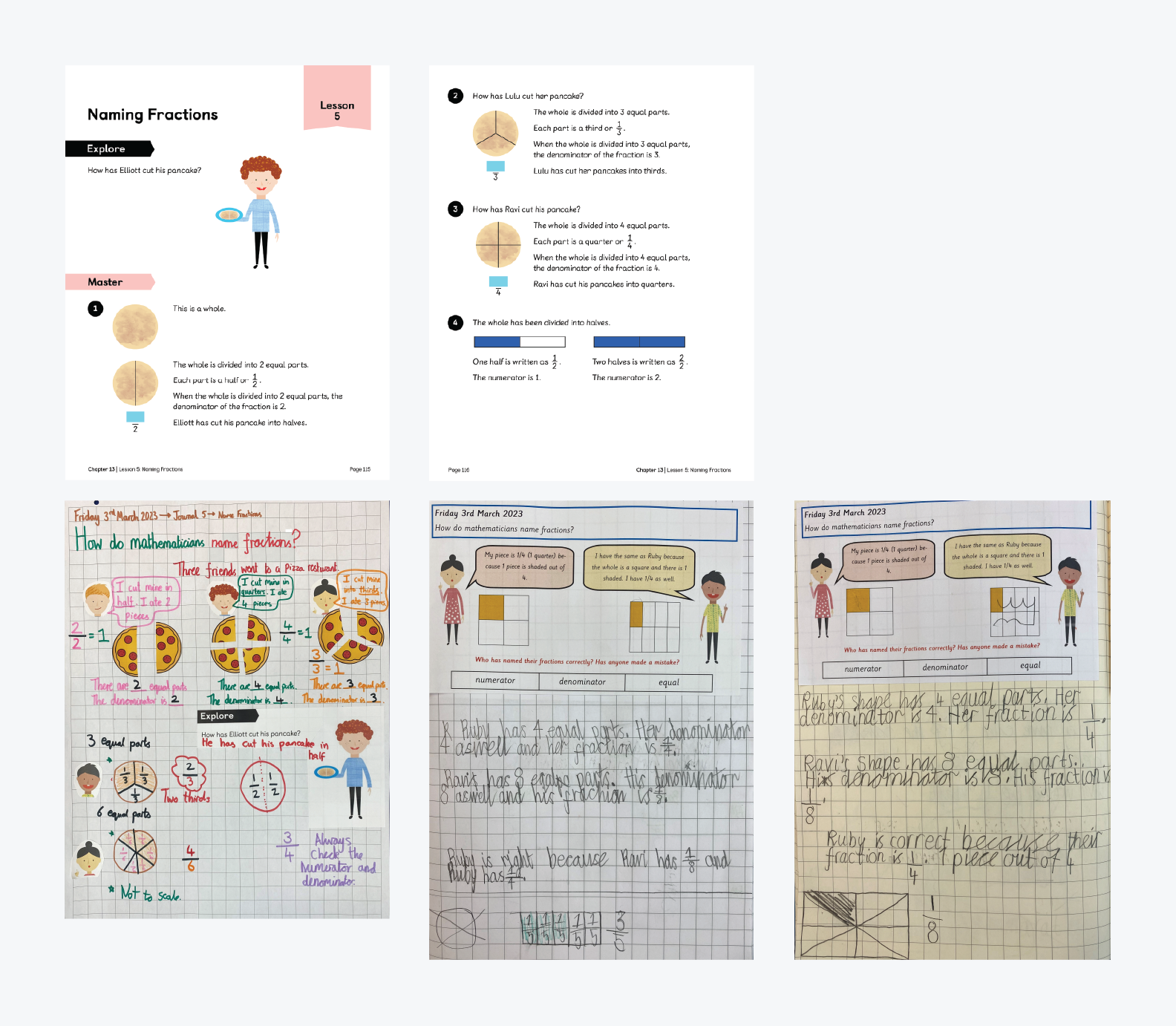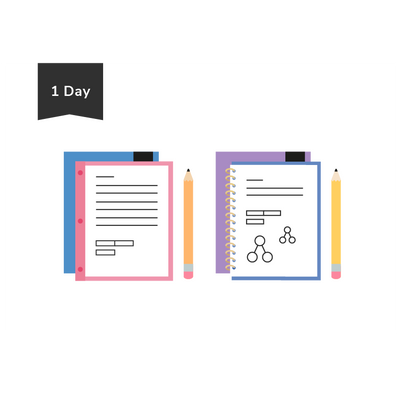Our Journey to Maths Mastery with Maths – No Problem!
‘It was immediately clear the quality of the resources would give us back our planning time.’
Attenborough School is a British Forces school based in Sennelager, Germany. In 2019, we found ourselves in a unique situation — we were a first school about to become a primary school and, at the same time, there was a large change in staff and senior leadership. This provided us with an opportunity to rebuild the school’s values, curriculum and ethos from the ground up.
Right from the outset, we wanted to reimagine the way we taught our curriculum subjects. Mobility is a significant feature of our school as our children are generally with us for just two years before relocating. This can present challenges. Sometimes, pupils arrive with learning gaps that need to be addressed and equally, we wanted to ensure that when pupils did leave, they took with them a secure and deep understanding of the curriculum.
So we embarked on a journey to find a progressive, high-quality scheme of learning that would ensure consistency for pupils from year to year. It needed to promote high levels of fluency, problem solving and reasoning. It also needed to provide clear objectives that we could easily assess so we could help pupils who required additional support.
Our team has a wealth of experience but when reflecting on how we taught maths previously, one commonality emerged: many of us found we would spend our planning time researching or creating our own resources to use within lessons. While we had access to a range of maths schemes, it would take time to compile the various resources and have them match our curriculum plans and long-term overviews.
‘We wanted to move away from this time-consuming practice of creating lesson after lesson from scratch.’
We wanted to move away from this time-consuming practice of creating lesson after lesson from scratch because it left us with less time for planning the truly meaningful things: formulating questions that would deepen learning; finding practical resources to enhance the concepts we were teaching; and simply reflecting on lessons we had taught previously to consider what we might change if we were to deliver them again.
Additionally, creating lessons from scratch left us less time to identify misconceptions and devise a plan for how to address them. Both of these are essential steps if pupils are to make progress.
After examining a range of programmes, we decided to trial Maths — No Problem! Since then, we haven’t looked back — and we’ve been building on our successes year after year.
Getting back our planning time
It was initially the resources and structure Maths — No Problem! offered that our staff appreciated most, the fact there was a clear sequence where each lesson had been planned and resourced. It was immediately clear the quality of the resources would give us back our planning time. We now look through upcoming lessons and reflect on the pedagogical approaches we might implement when we deliver them to our pupils.
The planning was there, but we also wanted to make sure we got the delivery of the textbook content right. Some of us had seen Maths — No Problem! resources used before, but had never been fully immersed in the mastery approach.
At first glance, some textbook features seemed confusing. Why would the answers sometimes be presented on the same page as the question? This was just one of many things that bewildered us at the time, and it really showed our lack of understanding for the approach.
It was only after our staff visited Three Bridges Primary School in Southall that everything began to slot into place. As one of the pioneer schools that helped develop the Maths — No Problem! Teacher Guides, Three Bridges was able to clarify a lot for us in those early days.
One of the features that stood out was the pupils’ level of engagement — maths lessons were full of opportunities for discussion as teachers carefully led the class through the Explore Task. We were also inspired by the use of Anchor Charts as a way to capture a lesson and save a visual reminder that could be referred back to. Anchor Charts are now a powerful tool for us at Attenborough School.

Pupils at Attenborough School use journals and an anchor chart to complete a Year 2 fractions lesson
Anchor Charts crystalise learning on flipchart paper
When presented with the Anchor Task, pupils have the opportunity to explore the concept being introduced by presenting their thinking on whiteboards. For teachers, this is the moment to capture any initial assessments through informal observation.
Some pupils may have an answer or method that can be shared. Others may have a misconception that needs addressing. The learning is then brought together during the creation of the Anchor Chart. During this teaching input, pupils share their ideas and any mathematical methods are discussed or taught. We record everything onto flipchart paper and the way we structure these charts is heavily influenced by the master section of the Maths — No Problem! textbook.

Anchor charts displayed in the classroom help pupils develop reasoning skills
It takes a cycle of continuous development before any new approach or initiative is fully embedded across the school. We’re lucky to work in a team where everyone has bought into the vision of Maths — No Problem! but initially it was only a small group of teachers who had started to use Anchor Charts in their lessons. Sharing the impact these were having led to other colleagues trying the approach.
To date, we feel Anchor Charts have made a big impact on our pupils’ ability to reason mathematically. Teachers prepare for a lesson by looking at the master section. Our anchor charts then become a reflection of the models and pictorial representations that are presented in the textbooks.
Maths journalling helps build reasoning skills
One of the factors that contributed to our decision to use Maths — No Problem! was the way it presents the learning to pupils. Concepts are sequenced and broken down into manageable chunks, with each lesson building slowly on skills that are introduced in small steps. The visual models and encouragement to use practical resources have really helped our students build fluency. But we also wanted a scheme that would help them develop their mathematical reasoning skills.
When we started our maths mastery journey, we were introduced to the practice of journalling. The maths journal gives pupils an opportunity to explain their understanding of a particular concept and to put on paper their methods or explanations. Maths journals also give teachers another avenue to assess whether a child has grasped the learning objective or whether they still have misconceptions.
Our journals go hand-in-hand with the Maths — No Problem! textbooks and workbooks. Teachers present pupils with a Journal Task that asks a similar problem to the one they encountered in the Explore Task. Anchor Charts displayed around the room give pupils at least one method, bar model or sentence stem to draw upon for help when answering a question or solving a problem.
Journalling not only allows pupils to practise and explain their methods, but through a variety of journal tasks — evaluation, investigation, creating your own problem — they have additional opportunities for mathematical reasoning and problem solving.

Samples of journal pages and an anchor chart from a Year 2 fractions lesson
The building blocks of developing a deep understanding
Embedding journalling into daily maths lessons has really helped our pupils develop reasoning skills. We want our pupils to be able to: justify their choices in maths; realise they can be creative when solving problems; know there is always more than one way to find an answer. We’ve found that pupils who are taught in a way that’s heavily focused on fluency often lack the number sense to justify their answers. They may have the method down pat, but often their understanding is only surface level.
Exploring and discussing the problem, creating Anchor Charts and journalling all contribute to deepening the pupils’ knowledge. It’s only after guiding them through all of these steps that we ask them to complete the questions in their workbook, the Fluency Tasks.
We’re still on our journey with Maths — No Problem! and are always looking for ways to improve our practice. Using the scheme has really changed the way we deliver maths and we remain passionate about helping other schools find their own success as they embark on their own mastery journey.
Journalling for Mastery CPD
Would you like to use maths journalling to advance your pupils? This one-day, expert-level course will show you how. Learn from one of our friendly experts in a relaxed, face-to-face setting. 14 June in London or 28 June in Manchester.


